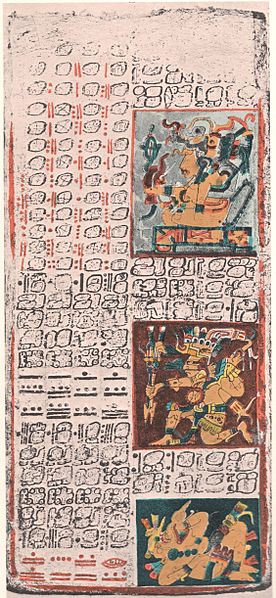The Isthmian script is an early set of symbols found in inscriptions around the Isthmus of Tehuantepec, dating to c. 500 BCE – 500 CE, though with dates subject to disagreement. It is also called the La Mojarra script and the Epi-Olmec script.
Detail showing three columns of glyphs from La Mojarra Stela 1. The two right columns are Isthmian glyphs. The left column gives a Mesoamerican Long Count calendar date of 8.5.16.9.7, or 156 CE.
Maya script, also known as Maya glyphs, is historically the native writing system of the Maya civilization of Mesoamerica and is the only Mesoamerican writing system that has been substantially deciphered. The earliest inscriptions found which are identifiably Maya date to the 3rd century BCE in San Bartolo, Guatemala. Maya writing was in continuous use throughout Mesoamerica until the Spanish conquest of the Maya in the 16th and 17th centuries. Though modern Mayan languages are almost entirely written using the Latin alphabet rather than Maya script, there have been recent developments encouraging a revival of the Maya glyph system.
Maya glyphs were often carved into stone and had minor depth when done so and these glyphs had high complexity
Yucatec Maya writing in the Dresden Codex, c. 11–12th century, Chichen Itza
An inscription in Maya glyphs from the site of Naranjo, relating to the reign of king Itzamnaaj Kʼawil, 784–810
Diego de Landa's Maya alphabet was an early attempt at decipherment.





